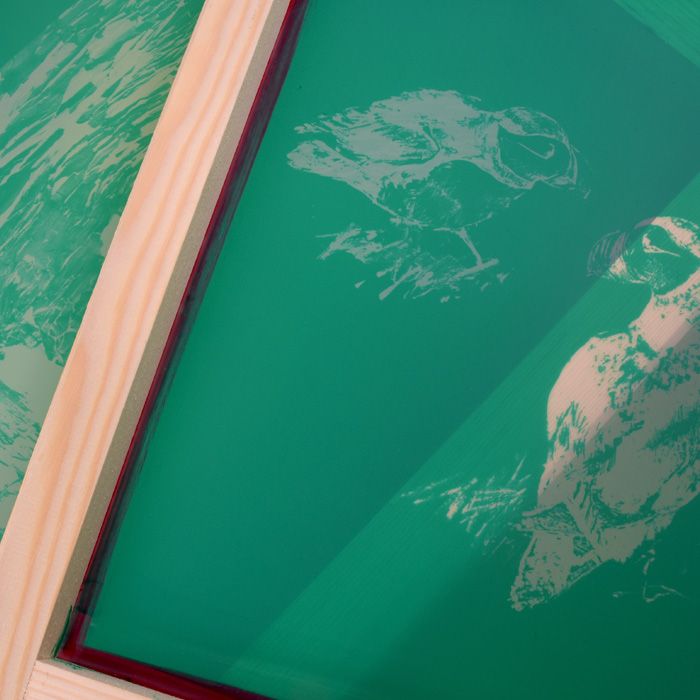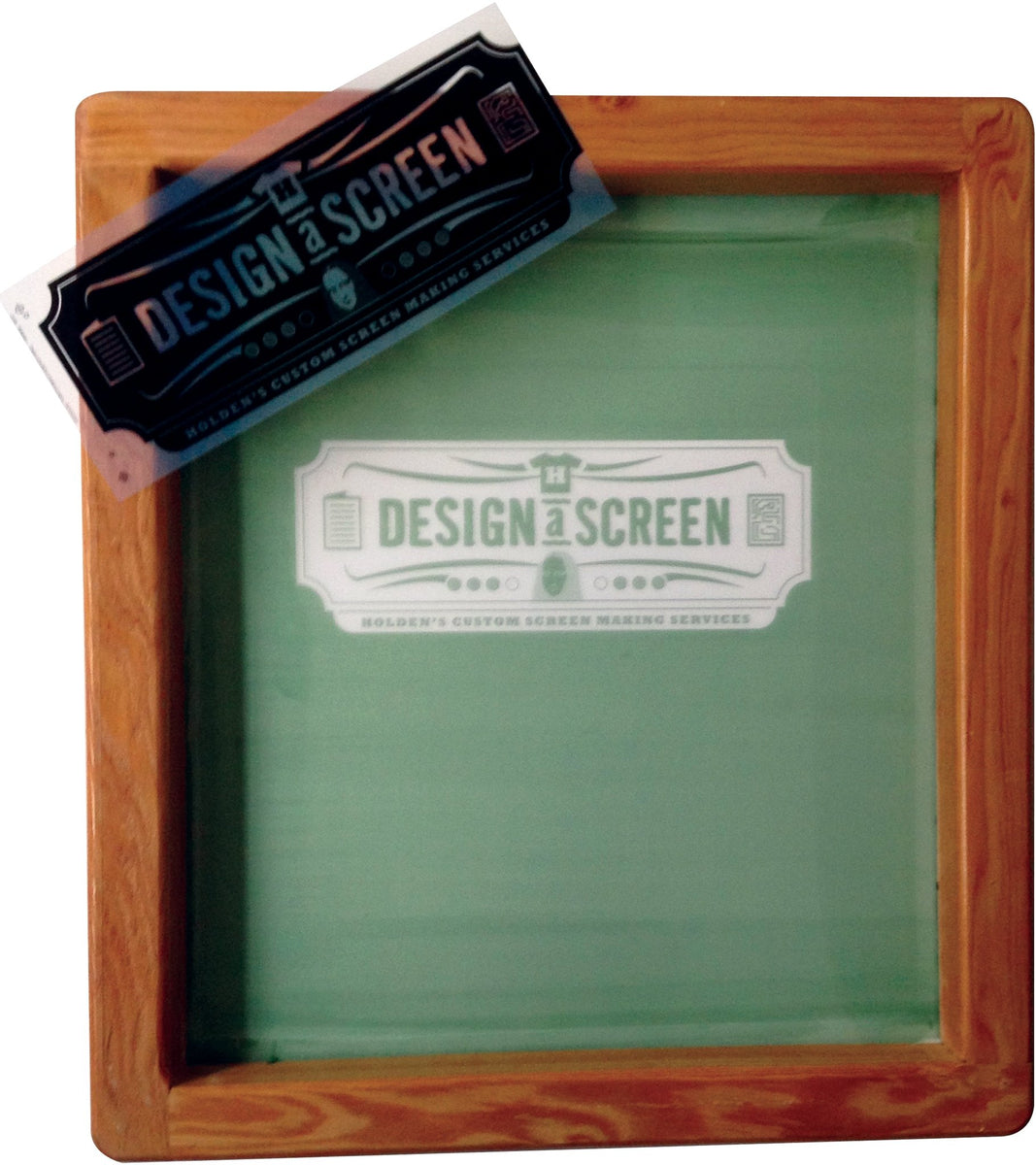High-End Silk Screen Printing for Premium Garments
High-End Silk Screen Printing for Premium Garments
Blog Article
Display Printing Uncovered: Whatever You Need to Learn About Tee Shirt and Garment Printing Techniques
Display printing is a remarkable technique that combines art with technique, offering endless possibilities for creative thinking. Ready to check out the important elements that make screen publishing an art kind?
The Basics of Screen Printing: How It Functions
When you dive right into screen printing, you'll find it's both a scientific research and an art. At its core, screen printing entails developing a stencil, or display, that permits ink to pass with just in specific locations.
Placement the screen over the textile, then use a squeegee to press ink through the screen onto the garment. Each step is essential, and grasping them will certainly boost your screen printing skills, transforming basic garments into distinct, expressive pieces.
Kinds of Screen Printing Methods
When you grasp the fundamentals of screen printing, it's time to discover the numerous techniques that can boost your designs. One preferred approach is standard display printing, where ink is pushed through a stenciled screen. This strategy is excellent for vibrant, dynamic shades. There's water-based ink printing, which offers a softer feeling and is eco-friendly, but it calls for a various technique to healing.
If you're aiming for fine information, consider discharge printing. This method eliminates dye from the material, leaving a soft, vintage appearance. An additional option is plastisol printing, known for its toughness and dazzling shades, making it a favored for lots of brands. Experiment with halftone printing to create slope effects and complex designs. Each strategy has its unique appeal, so do not be reluctant to try them bent on locate what fits your design best!
Important Devices for Screen Printing
To accomplish sensational cause display printing, having the appropriate devices is fundamental. Initially, you'll need a tough display printing frame, which holds the mesh that moves your design onto the garment. Next, purchase high-grade mops; these are crucial for using ink equally across the screen. You'll likewise call for an excellent direct exposure device to produce your screens, as well as a washout cubicle for cleaning them after use. A reputable warmth source, like a conveyor clothes dryer or warmth press, is important for healing your prints to guarantee durability. Do not forget a proper work area, equipped with tables and storage space for your supplies. Lastly, safety equipment, such as masks and handwear covers, will certainly keep you risk-free from chemicals and inks. With the right devices, you'll be well on your method to generating professional-quality prints.
Picking the Right Inks and Materials
When picking inks and materials for screen printing, you need to take into consideration the kind of ink that functions ideal for your task. Consider textile compatibility to ensure your layouts look wonderful and last long. Also, explore green ink options to make your printing procedure extra lasting.
Types of Screen Inks
Picking the appropriate screen ink is vital for accomplishing lively, resilient prints that meet your task's demands. There are several kinds of screen inks to analyze. Plastisol ink is prominent for its flexibility and convenience of usage, providing superb color opacity on dark fabrics. Water-based ink, on the various other hand, provides a softer feeling and is environment-friendly, making it suitable for those seeking to reduce their ecological effect. Release inks eliminate dye from the textile, leading to a soft, classic look but call for specific handling. Specialty inks, such as metallic or glow-in-the-dark, can add one-of-a-kind impacts to your designs. Examine your project needs and select the ink that lines up ideal with your desired result.

Material Compatibility Factors To Consider
Recognizing textile compatibility is important for achieving high-grade display prints, particularly since different products respond uniquely to numerous inks. When selecting inks, take into consideration the material kind-- cotton, polyester, or blends. For cotton, water-based inks function well, providing softness and breathability. Polyester, on the other hand, commonly calls for plastisol inks for much better bond and dynamic colors. You might require to utilize a combination of both kinds if you're printing on blends. Constantly examine your inks on sample fabric to assure they stick effectively and preserve color honesty. Furthermore, bear in mind that fabric weight and appearance can impact the final end result, so choosing the right ink and product combo is important for your project's success.
Eco-Friendly Ink Options
Eco-friendly inks are coming to be a popular option for display printers who wish to decrease their environmental effect while keeping quality. When choosing inks, consider water-based inks, which are much less unsafe and simpler to cleanse up contrasted to conventional solvents. These inks bond well with textiles, supplying dynamic outcomes without poisonous chemicals. You might likewise discover eco-solvent inks that make use of fewer unstable organic substances (VOCs), making them a much safer alternative for both your health and the world.
Furthermore, try to find inks made from renewable energies, such as soy or vegetable-based alternatives. By choosing the ideal inks and products, you'll not just produce spectacular layouts but also add to a more lasting printing procedure. Make the switch, and your prints will certainly reflect your dedication to the environment!
Preparing Your Layout for Screen Printing

Submit Format Requirements
To assure your style looks lively and sharp on fabric, you'll need to pay attention to file layout needs for display printing. Start with this post vector documents like AI or EPS, as they can be scaled without shedding high quality. If you make use of raster photos, choose high-resolution data, such as TIFF or PNG, preferably at 300 DPI. Avoid utilizing JPEGs, as they can shed clarity when resized. Make sure your style has a transparent history to prevent undesirable white edges on your prints. Finally, maintain shade modes in mind; CMYK is conventional for screen printing, so convert your RGB designs accordingly. By adhering to these standards, you'll set your artwork up for a successful print.
Shade Separation Methods
Shade splitting up is an important step in preparing your layout for screen printing, and grasping it can substantially boost your print high quality. You'll need to damage your design right into private shades, as each color needs a separate display throughout printing. Begin by determining all the colors in your design and create layers for each one. You can make use Website of software program like Adobe Photoshop or Illustrator to isolate and separate colors effectively. Be particular to conserve each layer as a separate file, usually in a layout like TIFF or PSD. This accuracy not just ensures accurate shade representation but additionally simplifies the printing procedure. By taking notice of color splitting up, you'll accomplish dynamic and professional lead to your screen-printed garments.
Resolution and Dimension
Accomplishing the most effective results in display printing starts with guaranteeing your layout has the best resolution and size. Preferably, your art work needs to go to least 300 DPI (dots per inch) for sharp, clear prints. If you utilize reduced resolution, your end product might look pixelated and amateur.
When it comes to size, take into consideration the dimensions of your print area. Style your art work to match the final print size, ideally creating it in the actual dimensions you'll be publishing. In this manner, you'll prevent any unanticipated scaling issues.
Constantly examine your layout in both vector and raster formats. Vector graphics can be scaled without shedding high quality, making them optimal for display printing. Preparing properly will assure your layout looks outstanding on every garment!
Step-by-Step Screen Printing Process
Screen printing is a dynamic process that permits you to create dynamic designs on various surface areas. To get begun, you'll need a screen, solution, and your selected ink.
After rinsing the unexposed solution, your display is ready. Set it up on this website your printing surface and straighten your garment under it. Put ink onto the display and make use of a squeegee to push the ink with the stencil onto the textile. Lift the screen very carefully and allow the print completely dry. Ultimately, heal the ink making use of heat to ensure sturdiness. That's it! You have actually efficiently screen published your design.
Tips for Successful Screen Printing Projects
While you're diving into your screen printing projects, keep in mind that preparation is vital to success. Start by collecting all your products-- inks, mops, garments, and displays. A clean office assists protect against undesirable errors, so clean before you start.
Next, verify your artwork is high-resolution and appropriately sized for your garment. Test your screen for correct direct exposure and tidy it completely to avoid spots. When mixing your inks, follow the maker's standards to accomplish the ideal consistency.
Throughout printing, use even pressure with your squeegee for consistent results. Don't rush; take your time to confirm each print fulfills your standards. After printing, let your garments completely dry completely before managing or packaging them.
Finally, constantly keep an example of your benefit future reference. This way, you can analyze your development and improve your techniques gradually. Satisfied printing!

Regularly Asked Questions
The length of time Does It Require To Establish a Display Printing Task?
Establishing a display printing work normally takes about thirty minutes to an hour. You'll prepare the screens, mix inks, and adjust the press. The moment differs based upon complexity and experience, so stay organized!
Can I Publish on Different Textile Keys In Using the Very Same Method?
Yes, you can publish on different material types using the same strategy, yet you'll need to change your settings and inks. Some materials soak up ink in a different way, so experimenting guarantees the very best results for each and every product.
What Are Typical Blunders to Avoid in Display Printing?
When display printing, stay clear of usual mistakes like using the wrong ink, overlooking appropriate direct exposure times, or avoiding pre-press checks. Constantly test your setup and preserve clean displays to ensure top quality results each time.
Exactly How Can I Properly Clean and Preserve My Display Printing Devices?
To correctly tidy and maintain your screen printing equipment, you should consistently wash displays with suitable solvents, inspect squeegees for wear, and guarantee all devices are kept dry and dust-free. Uniformity avoids costly fixings and enhances efficiency.
Is Display Printing Eco Pleasant Compared to Various Other Techniques?
Display printing can be more ecologically friendly than other methods, particularly if you use water-based inks and eco-conscious products. By selecting lasting supplies and practices, you minimize waste and minimize your effect on the world.
Display Printing Uncovered: Every Little Thing You Required to Know About Tee and Garment Printing Methods
At its core, screen printing involves creating a pattern, or display, that permits ink to pass through only in certain locations. Placement the screen over the material, after that use a squeegee to push ink through the display onto the garment. One preferred technique is conventional screen printing, where ink is pressed through a stenciled display.When choosing inks and products for screen printing, you need to take into account the kind of ink that works best for your task.
Report this page